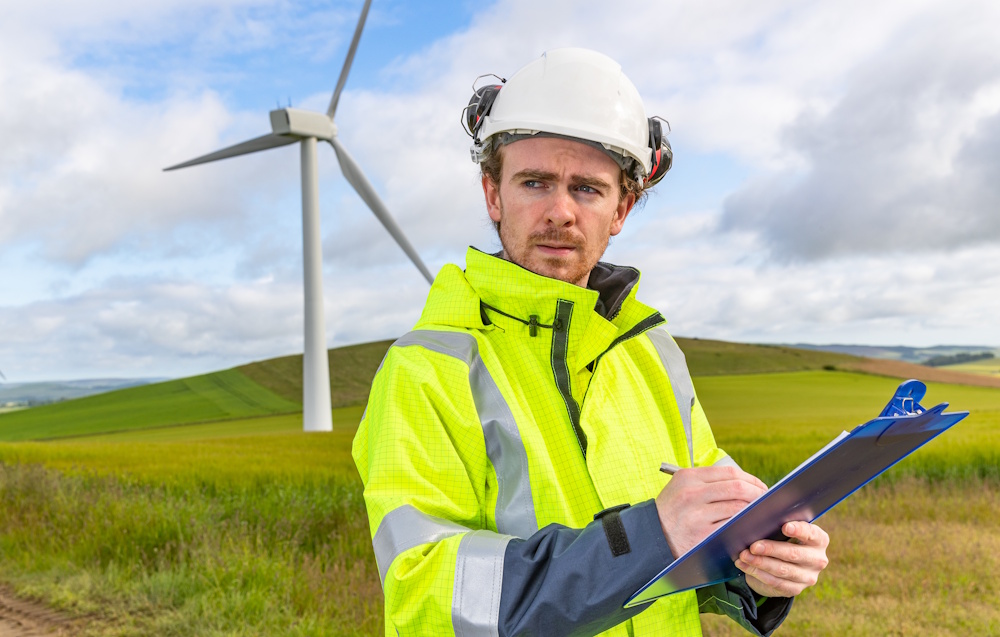Article
Greentech: Today’s comms opportunity

Diffusion’s Head of Climate & Cleantech, Peter Jackson discusses the PR opportunities and threats from polarising media coverage of green issues.
In June 2023, where were the following lines published? ‘Capitalism won’t deliver the energy transition fast enough… and neither will big oil.’
It’s a statement that would seem at home in Extinction Rebellion literature – so it might be surprising to see that this was the editorial line in the Financial Times’ Oil and Gas pages.
It represents major shift in media sentiment that I’ve seen in the last decade, where acceptance of climate change and the obligation to meet net zero targets has become the establishment view. It reflects the fact that most of the world economy, broken down by country or sector, has a net zero goal. These goals might not be particularly binding, and we’re certainly not on track to meet them – but they’re there. Industry media, for the most part, reflects that, as the FT line shows.
Meanwhile, mainstream media, which ten years ago would often take a neutral view of climate matters, as long as they were tackled apolitically, is now far more sceptical. Particularly in the UK, parts of it are treating the idea of net-zero targets as optional, if not objectionable.
It’s a shift that cleantech brands need to recognise. Green communications used to be a matter of heart over head, or at least, head over wallet. But it’s becoming increasingly clear that the most sustainable path forward is the best commercial path – or at least, it’s not a ‘nice to have’ frivolity.
Taking net zero seriously means tackling the world as it is, and in many cases, operating from a place of self-interest. It means aligning long-term investments with climate targets, because otherwise the world becomes uninsurable. It means decarbonising the global shipping industry because otherwise, extreme weather will cause more accidents. It means decarbonising travel before climate change makes ski breaks a thing of the past. Statements from insurers banks, regulators, and most recently, more than 130 of the world’s largest businesses all reflect that – and so does the industry media.
I’m not kidding myself – a decent chunk of this is still greenwashing, and increasingly unsubtle greenwashing at that.
But it’s still hard to make the case that green ambitions aren’t business friendly when businesses worth $1trn are calling to rapidly phase down coal, oil, and gas production. Climate advocates aren’t just the David Attenboroughs and Greta Thunbergs. Corporations are taking stances that would have been considered radical ten years ago – and industry media understands that.
It’s essential that clean and climate brands recognise this too.
Painting the town green
Take paint, for example. The type of paint used on ships affects whether barnacles grow on their hulls, the friction those barnacles cause, and consequently, paint choices determine fuel consumption and emissions. When I first tackled the issue of energy saving from maritime coatings, in 2016, we needed to sell the idea based on the extra incentives of carbon credits. Talking about emissions reductions alone wasn’t going to cut it – we had to appeal to a more commercial mindset. Fuel was cheap, carbon was free, and we needed a trail of carrots to move people in the right direction.
Later, in 2020 tackling the issue again, everything had changed. Shippers like IKEA, Cargill and Heineken were asking for lower carbon shipping. The Poseidon Principles were in place to link finance to GHG reduction, and importantly, the UN had mandated solid net zero goals for 2030 and 2050. We didn’t need to offer carbon credits to win over ship owners – we just had to show them that the solution worked, with research showing how warming seas were making the problem worse. We weren’t selling the idea of decarbonisation as much as the solution.
The detractors are still there, but they aren’t taking up as much space in the conversation. The world has changed, and shipping is on board with net zero. It’s a pattern that we can see emerging elsewhere in hard-to-abate industries.
Media titles in these sectors are evolving to keep pace – not just the FT. Previously, you could expect B2B media in traditionally conservative industries to lean into this tendency. Most B2B titles are now creating some of the best writing out there on the challenges of decarbonisation. They reflect the fact that fundamentally, major markets and industries are committed to a low-carbon future.
Mapping the cleantech media
This new media landscape provides major opportunities for cleantech innovators, but pitfalls as well.
It’s essential that cleantech communicators start by identifying advocates and detractors. You can’t expect tech desks to be neutral on climate any more. Even broadly ‘green’ journalists might be detractors – don’t expect a free ride on an issue like hydrogen from a battery die-hard, for example. And across platforms, your biggest fans and detractors could be anyone. It might be the right academic leading the debate on Linkedin as much as it could be someone with thousands of followers hyping nuclear on tiktok.
What’s great is that green journalism as a whole looks different from ten years ago too. It’s not relegated to an environment section of a mainstream, next to fun animal stories, or hidden away in a niche. Titles like Grist, Canary, or Heated are growing, and far from staying in their lane, they’re often breaking stories that come to dominate the mainstream.
By contrast, the mainstream media can look a lot more like the trades of old. Stories like Rowan Atkinson throwing a fit about electric vehicles (in the Guardian, no less) feel like they sit more in the 1990s than the present.
There are exceptions of course; plenty, on all sides. But the time is ripe for new technology to take advantage of finance that is still outperforming the market, even in a tough climate. Just in the last few weeks I’ve been excited to see new interest in wave power, and increased focus on decarbonising steel, cement and chemicals. It’s also becoming abundantly clear that new renewables are nothing without grid connections – which need investment on both sides of the Atlantic.
Cleantech and climate innovators can break through in this new landscape to attract the right investors, partners and talent, and deliver impactful messages to their stakeholders. But it’ll take a detailed understanding of the climate and cleantech media, across B2B, mainstream, and social media to make it happen.
Get in touch with me at [email protected] to find out more about how we can help ambitious brands in climate and cleantech to bring tomorrow closer.





